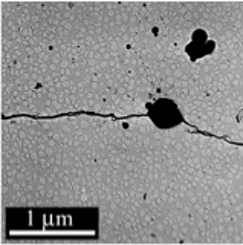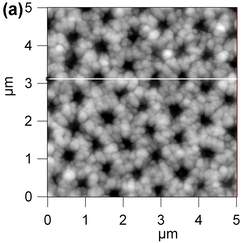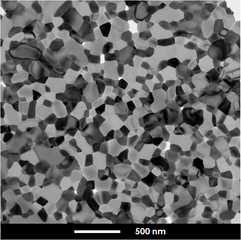Our recent research activities fall into four main areas:

Aerospace Alloys Combinations of SEM, FIB and TEM techniques have been used to determine microstructural details which reveal the origins of processing/structure/property relationships in Ni superalloys for gas-turbine engines and in Al alloys for airframe applications. The projects in this area have included studies of: grain growth in powder-processed superalloys, surface effects in percussion-laser-drilled single-crystal superalloys, and development of novel ultra-high-strength Al-RE-TM alloys.
Sponsors: DARPA, Pratt and Whitney, CCAT.
Image from: JKM Garofano et al., Mater Charact 61: 929-936 (2010).

Catalytic Nanomaterials High-resolution TEM is being used to reveal the morphological development in a range of important heterogeneous catalysts. Our projects in this area are based upon two main collaborations. Work with the Suib group in Chemistry at UConn concerns oxide catalysts, with particular emphasis on micro-/meso-porous Mn oxides. Projects with the Erkey group at Koç University in Turkey involve supported noble metal and alloy catalysts synthesized by supercritical carbon dioxide processing.
Image from: SE Bozbag et al., J Supercrit Fluids 66: 265–273 (2012).

Conducting Oxides Metallic alloys typically exhibit excellent bulk electrical conductivities, but the native oxide scales that form on the surfaces can lead to unacceptably high contact resistances. We are working with the Alpay group to develop alloys that form inherently conductive native oxide scales as the basis for novel self-healing contact materials. We are also working on Mn-Co spinel coatings for SOFC interconnect alloys to maximize high temperature oxidation resistance and electrical conductivity. A new activity that utilizes these approaches to develop novel materials for electrical circuit breaker contacts is being established with GE.
Sponsors: ARO, NSF, UTRC, GE Energy.
Image from: BS Senturk et al., Acta Mater. 60: 851–859 (2012).

Nano-Composite Coatings Single-phase nanostructured materials can exhibit greatly enhanced mechanical properties, but are inherently susceptible to grain growth which can degrade these properties. The formation of nano-composite systems can lead to much greater microstructural stability. We have worked extensively with the Jordan group to develop oxide/oxide nanocomposites with fine uniform phase domain structures which maximize this stabilization effect. We are also working with a local company to develop a better understanding of nanocomposite systems based upon Co-P, which are intended as a replacement for hard chrome.
Sponsors: DARPA, Raytheon, US Chrome.
Image from: CH Chen et al., J Am Ceram Soc 94: 367–371 (2011).
Other areas in which the group has been involved extensively include: atomic structures of defects and interfaces, microstructural development in epitaxial thin films, and physical metallurgy of refractory intermetallic compounds.